Research
 The three-legged stool of nutrition
The three-legged stool of nutrition
There are always three places to start in improving the nutrition of the organism. While there are vitamins and minerals, the catalysts of good health, the building blocks are found in proteins, carbohydrates and fats.
Proteins: made up of essential amino acids (AA's)
Fats: made up of essential fatty acids, Omega 3:6:9 (EFA's)
Carbohydrates: made up of essential sugars and fibers (EGN's)
EGN stands for Essential Glyco-Nutrient. These are the 8 essential sugars for cell structure and function, used in cellular communication.
What Is Holistic Nutrition?
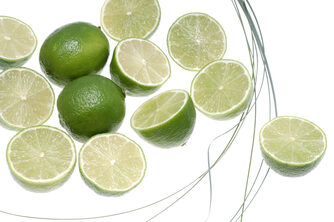 Holistic nutrition teaches you what to do to prevent illness or disease from happening to you. It incorporates information about whole foods and makes it easy to understand. It teaches you how to cook so you save money, eat healthy and lose weight while accomplishing your goals.
Holistic nutrition teaches you what to do to prevent illness or disease from happening to you. It incorporates information about whole foods and makes it easy to understand. It teaches you how to cook so you save money, eat healthy and lose weight while accomplishing your goals.
When we shop in the grocery store we have many choices. When we make intelligent choices we save money, feel better, and have smart kids. Buying foods that are high in sugar and food colorings is not in our best interest, so we will use The Rainbow Program and switch them for brightly colored fruits and vegetables instead.
Brightly colored foods appeal to the mind, and we need the color wavelengths from colored food to be balanced. We actually need to eat red, orange, yellow, green, blue and purple foods every day, not forgetting brown, black white, clear and pink. These different colors stimulate different organs and hormones and provide different biochemicals that our bodies need to run properly and protect us from disease.
Whole Foods
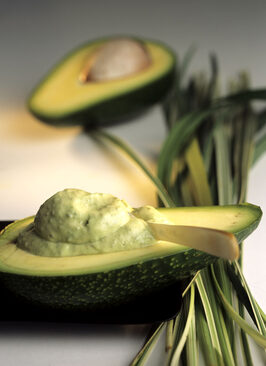 When we eat natural food: food grown in mineralized soil, and eat it in its natural state, we grow big and strong. Whole foods are foods that are eaten the way we find them in nature, without added processing. They contain the fewest chemicals and are all different shapes and all different colors.
When we eat natural food: food grown in mineralized soil, and eat it in its natural state, we grow big and strong. Whole foods are foods that are eaten the way we find them in nature, without added processing. They contain the fewest chemicals and are all different shapes and all different colors.
Whole foods supply the vitamins and minerals we need each day. When we eat them it is more work for our body, so our metabolism goes up. This helps us to digest other foods, such as animal products. This also helps us burn fat and lose weight, so we don’t become overweight. It is very difficult to become overweight on a diet of whole foods, first, because they are high in water, and second, because they take up more room, leaving less room for unhealthy foods such as pop and chips.
Even on a limited budget we can still purchase whole foods like lentils and brown rice, beets, carrots, spinach and green beans. We can buy olive oil very inexpensively, and substitute ground turkey for hamburger. These small changes will make a lot of difference over our lifespan when we consider that we should avoid the saturated fat of animal products, and the hydrogenated fat from polyunsaturated oils and eat monounsaturated fat instead. This "good" fat is found in avocadoes, olives, and nuts.
How to Cook Whole Foods
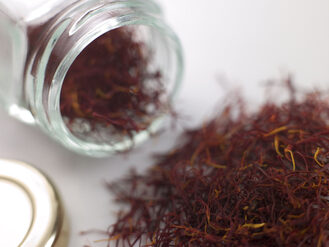 Whole foods have to soaked, peeled, or cut before eating, so they take some preparation. Soup is an ideal way to consume vegetables, beans and lentils and rice, and it will last all week.
Whole foods have to soaked, peeled, or cut before eating, so they take some preparation. Soup is an ideal way to consume vegetables, beans and lentils and rice, and it will last all week.
Using a pressure cooker or a slow cooker is also a good way to prepare whole foods. Vegetables may be put in a frying pan with some olive oil and saute-sealed, as well as chicken breast or ground turkey and herbs and spices. Herbs may be selected raw or dried. Dried herbs are available in the bulk foods section. Spices may be ground in a coffee grinder.
When we use herbs for cooking or in tea we increase the mineral content of our foods. They taste better and are more nutritious.
Herbs are categorized by color in The Rainbow Program. Selecting different herbs affects different organs and symptoms. Choose from teas, bulk herbs, tinctures and extracts.
Herbs can be purchased at your local health food store. They can be steeped or infused to create a blend of health-giving synergistic nutrients. These nutrients have qualities that help counteract the bodily symptoms that lead to disease.
Ginger and garlic are also particularly good added to saute-sealed vegetables and soup. All these choices add up to improved health, taste and good nutrition!
Healing Sugars?
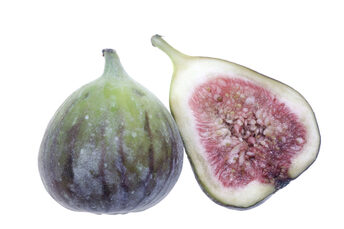 Of the more than 200 known sugars, 8 are now considered essential for optimum health. Although all of these 8 sugars can be burned for energy, their main job is to enhance cellular communication and boost the function of the immune system. These 8 saccharides are critical in virtually all communication between individual body cells. These 8 essential glyconutrients confer cells with the intelligence to from the structure of the body and aid immensely in the daily repair of tissues and organs. They also are intimately involved in helping your body’s defence system to recognize invaders such as harmful bacteria and viruses.
Of the more than 200 known sugars, 8 are now considered essential for optimum health. Although all of these 8 sugars can be burned for energy, their main job is to enhance cellular communication and boost the function of the immune system. These 8 saccharides are critical in virtually all communication between individual body cells. These 8 essential glyconutrients confer cells with the intelligence to from the structure of the body and aid immensely in the daily repair of tissues and organs. They also are intimately involved in helping your body’s defence system to recognize invaders such as harmful bacteria and viruses.
The fact is, research in this field is burgeoning and in my opinion is destined to revolutionize medicine. It may shift the focus of modern medicine from treatment to prevention. Note: If you lack the full spectrum of nutrients present in primal foods, the addition of these eight sugars will not aid you. You must consume a healthy primal diet to fortify your body for any supplement to work. (See WBJ, vol.12, no.6, “Type 2 Diabetes Controlled by Primal Foods.”)
--Patrick Lecky, Can Certain Sugars Really Heal Diabetes: Introducing the Science of Glyconutrients
Glycobiology
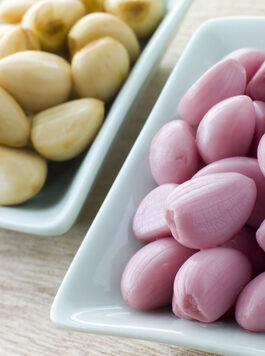 These saccharides combine with proteins and/or fats to build either glyconutrient or glycolipids that are incorporated in the membranes of all your body cells. Collectively, these substances are known as glycoforms and have powerful actions. First, they can jump-start your immune system to diminish cancerous tumors or even slow their spread.
These saccharides combine with proteins and/or fats to build either glyconutrient or glycolipids that are incorporated in the membranes of all your body cells. Collectively, these substances are known as glycoforms and have powerful actions. First, they can jump-start your immune system to diminish cancerous tumors or even slow their spread.
They also have a role in boosting the functioning of your brain and nervous system, acting to normalize memory, sleep, anxiety and depression. They help to stabilize high blood triglycerides, which plague diabetics, and to lower LDL cholesterol and raise HDL cholesterol. They also help you retain bone density and muscle mass, which decrease with advancing age. They help form new blood vessels that allow muscles to increase in mass. They are intimately involved in tissue building, which is critical for healing and recovery. Here’s a case to illustrate the point. You’ve probably heard about one glyconutrient for years—glucosamine. This is a metabolic products of one of the 8 essential saccharides—N-acetylglucosamine. Glucosamine is sold in health stores for osteoarthritis. A 2001 study in the medical journal Lancet reveals that glucosamine relieves pain and inflammation of and also reversed injury by rebuilding cartilage in arthritic joints.
This new branch of science is called glycobiology. Glyco means sugar. The theory is that because of the refined nature of our diet, we generally consume only 2 of the 8 essential sugars—glucose and galactose. However, these 8 sugars are so essential that our bodies can use glucose and galactose to produce the ones that are lacking in our foods. But you need optimum health for this to occur. in addition, viruses, bacteria and toxins hijack the same enzymes that convert saccharides from one form to another. This means that when under assault, your body may not be able to the produce the eight sugars fast enough.
--Patrick Lecky, Can Certain Sugars Really Heal Diabetes: Introducing the Science of Glyconutrients
Study
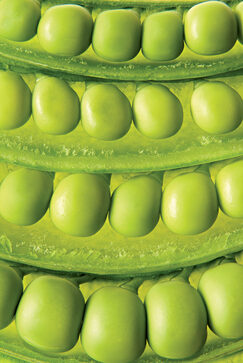 5-YEAR STUDY SHOWS ALOE AND PSYLLIUM EFFECTIVE AGAINST AGAINST DIABETES
5-YEAR STUDY SHOWS ALOE AND PSYLLIUM EFFECTIVE AGAINST AGAINST DIABETES
Really exciting news was reported in 1984 in an experiment where O.P. Agarwal, M.D., F.I.C.A., mixed aloe vera with the husk of the Isabgol plant (psyllium seed husks), a fiber source, and had 5,000 folks suffering from atheromatous heart disease (angina pectoris) ingest the mixture during a 5-year controlled study. Angina is chest pain due to insufficient blood flow to the heart. Of those patients, 3,167 were diabetic. Quickly, within the first week, most patients noted a disappearance of angina. After three months, all patients except 348 had normal heart readings after exercising on a treadmill.
In the diabetic group, an astounding 2,990 people (94%) saw their fasting and after meal blood glucose readings reach normal levels. There was also a marked reduction in total serum triglycerides and total lipids and what’s more, beneficial HDL cholesterol increased. The patients were able to gradually lessen drugs like verapamil, nifedipine, beta-blockers and nitrates. There were no side effects reported at all, and all 5, 000 patients were still surviving after the 5-year study! (“Prevention of Atheromatous heart Disease,” Agarwal, OP, Angiology, 1985 Aug; 36 (8): 485-92.)
I’ve known about about this study study since 1994 and have just discovered that psyllium seed husks also contain beneficial polysaccharides. Thus, the folks in this study consumed two sources of essential saccharides: aloe vera and psyllium. In fact, studies prove that psyllium has the ability to lower “bad” LDL cholesterol and decrease cholesterol absorption in men with high cholesterol.
--Patrick Lecky, Can Certain Sugars Really Heal Diabetes: Introducing the Science of Glyconutrients
